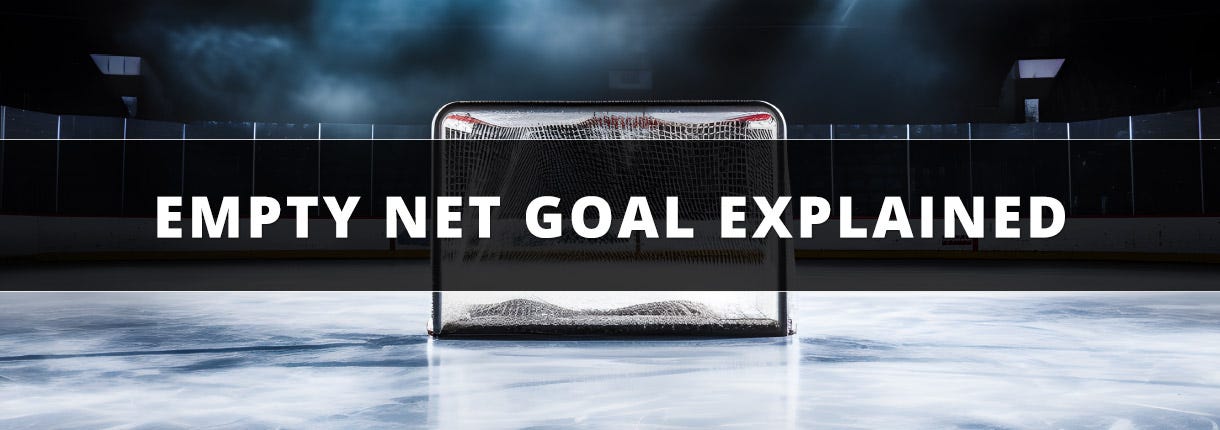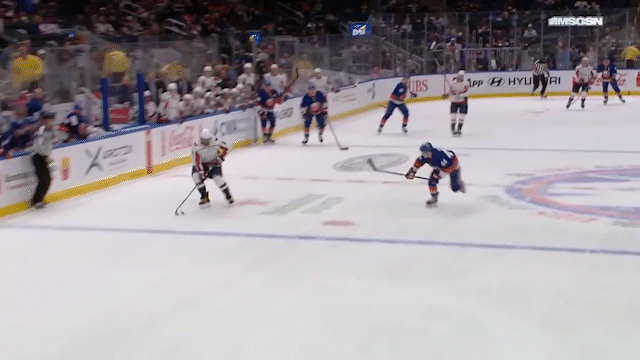Why Does the Goalie Leave and Empty Net in Hockey?

Have you ever been watching a hockey game and suddenly noticed the goalie skating off towards the bench, leaving an open net behind? It’s a moment that can cause both confusion and excitement. This scenario, known as an “empty net” in hockey, often leads to the question: why would a team voluntarily choose to leave their goal unprotected? This article aims to demystify the strategy behind this approach, providing an authoritative exploration of one of hockey’s most dramatic tactics.
In this article, we’ll cover:
The Basics of an Empty Net in Hockey

An empty net in hockey refers to the situation where a team removes their goaltender from the ice, leaving the goal unattended. This is not a sign of surrender, as it’s a calculated risk, where the potential for a game-changing goal is weighed against the risk of conceding one. It's a move that can lead to thrilling comebacks or devastating defeats, and is an essential part of the game’s tactical landscape.
Empty Net Goal: Risk vs. Reward
The decision to pull the goalie is a classic risk versus reward scenario. By removing the goalie, a team gains an extra skater, increasing their offensive power. However, this leaves their net vulnerable to the opposing team, who can score from anywhere on the ice without the risk of icing. Coaches must carefully consider the game’s score, time remaining, and the team’s offensive capabilities before making this pivotal decision.
Notable Empty Net Goals
Hockey history is peppered with empty net goals that have clinched victories or turned the tide of games. For example, during the 2017 Stanley Cup Playoffs, the Pittsburgh Penguins’ Carl Hagelin scored an empty net goal in Game 6 of the Stanley Cup Final against the Nashville Predators. This goal came in the final minutes of the game, securing the Penguins’ lead and clinching their second consecutive Stanley Cup. These moments are etched in the memories of fans and players alike, often being pivotal in playoff series or even deciding championships.
Reasons for Pulling the Goalie in Hockey
Pulling the goalie, or “going for the extra attacker,” is a tactic used by coaches to try to score a goal, typically late in the game when trailing by one or two goals following the maxim that the best defense is a strong offense.
Offensive Advantage
By pulling the goalie, a team gains an extra attacker, which can be crucial when trying to capitalize on offensive pressure. This strategy is often seen when a team is trailing and needs to bolster their chances of scoring, especially during a power play, turning it into a two-man advantage.
Time Management
Time management is another critical aspect of the decision to pull the goalie. In the final minutes of a game, every second counts, and having an extra attacker can help a team make the most of the limited time left on the clock. This strategy is a gamble that teams are willing to take to tie the game or take the lead.
Rules and Guidelines for Pulling the Goalie in Hockey
There are specific rules and guidelines that govern when and how a goalie can be pulled. Understanding these can provide insight into the timing and conditions under which coaches decide to employ this tactic.
Delayed Penalty Situations
A delayed penalty offers a unique opportunity for teams to pull their goalie. Since the play will be stopped once the offending team touches the puck, there’s no risk of conceding a goal. Teams use this chance to add an extra skater and create offensive pressure without waiting for the penalty to be called.
Regulation vs. Overtime
The strategy of pulling the goalie varies between regulation time and overtime. During regulation, a team may pull their goalie with one to two minutes left if they are trailing. In overtime, where a loss means conceding an additional point, coaches are more cautious, often pulling the goalie only at the last minute or not at all.
Empty Net Goal in Hockey FAQs
Does empty net ever work?
Yes, employing an empty net can and does work. Teams often score to tie the game or take the lead, although it’s a move that comes with significant risk.
Do you get a minus for an empty net goal?
In player statistics, a skater on the ice for an empty net goal does receive a minus on their plus/minus rating, just as they would if the goalie were in net.
Who leads NHL in empty-net goals?
Wayne Gretzky currently holds the record for the most empty-net goals across his career in NHL history.
How often do teams score on empty nets?
While specific percentages vary by season, teams score on empty nets a significant amount of the time, making it a strategy that can pay off as often as it can backfire.









Login and Registration Form
or
Create an account